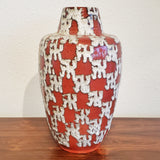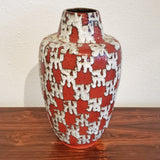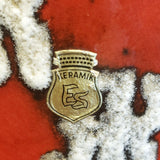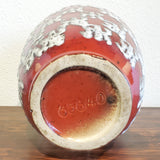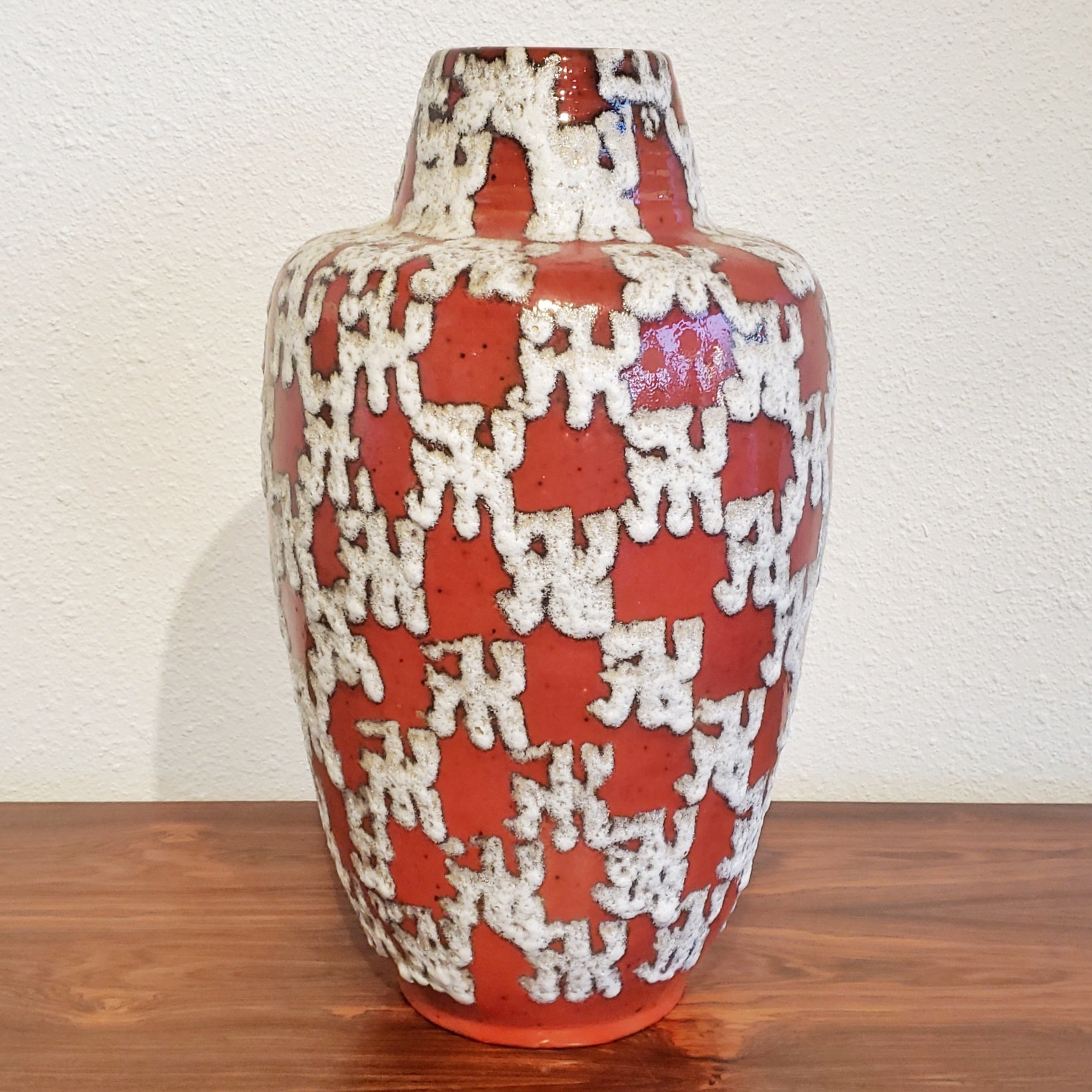
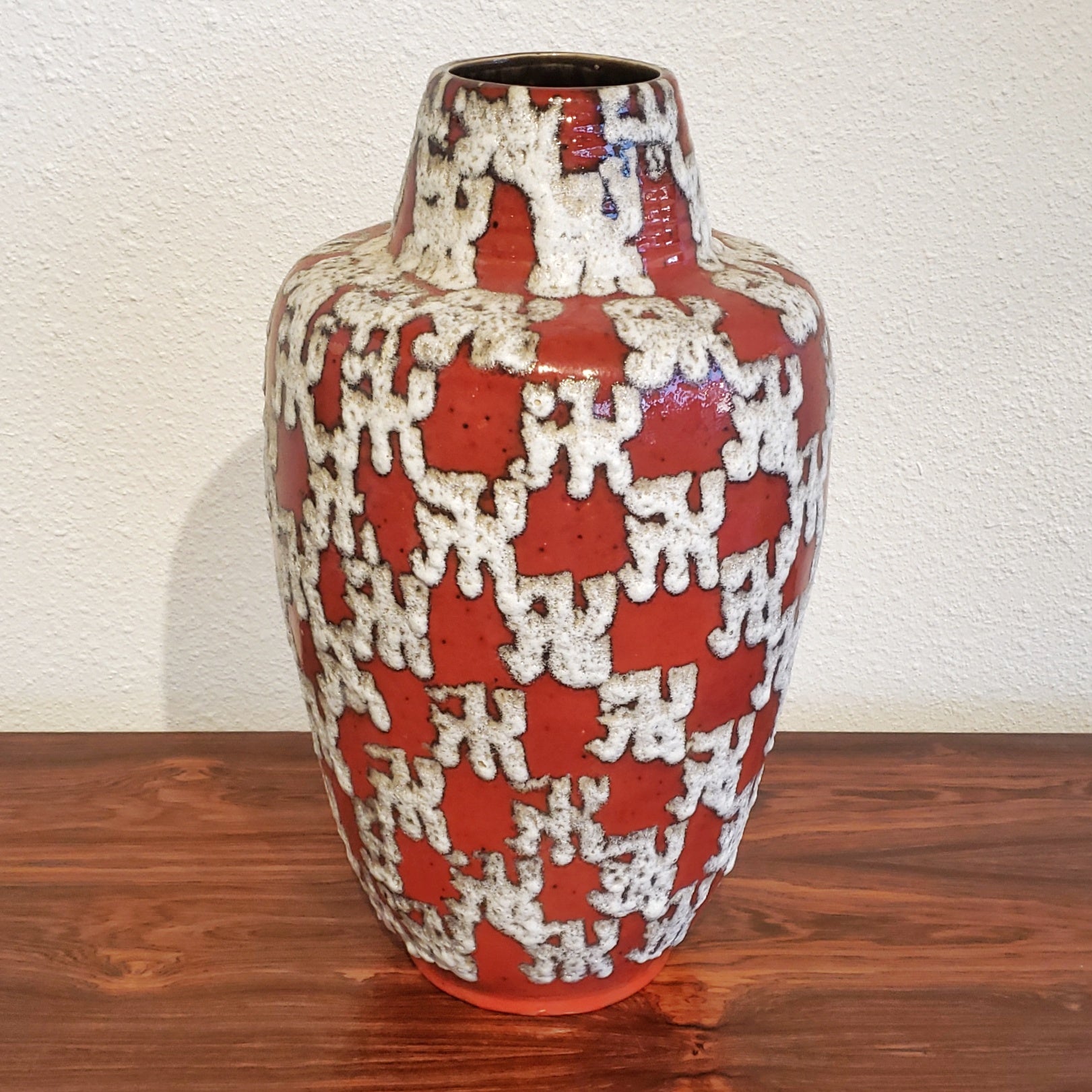
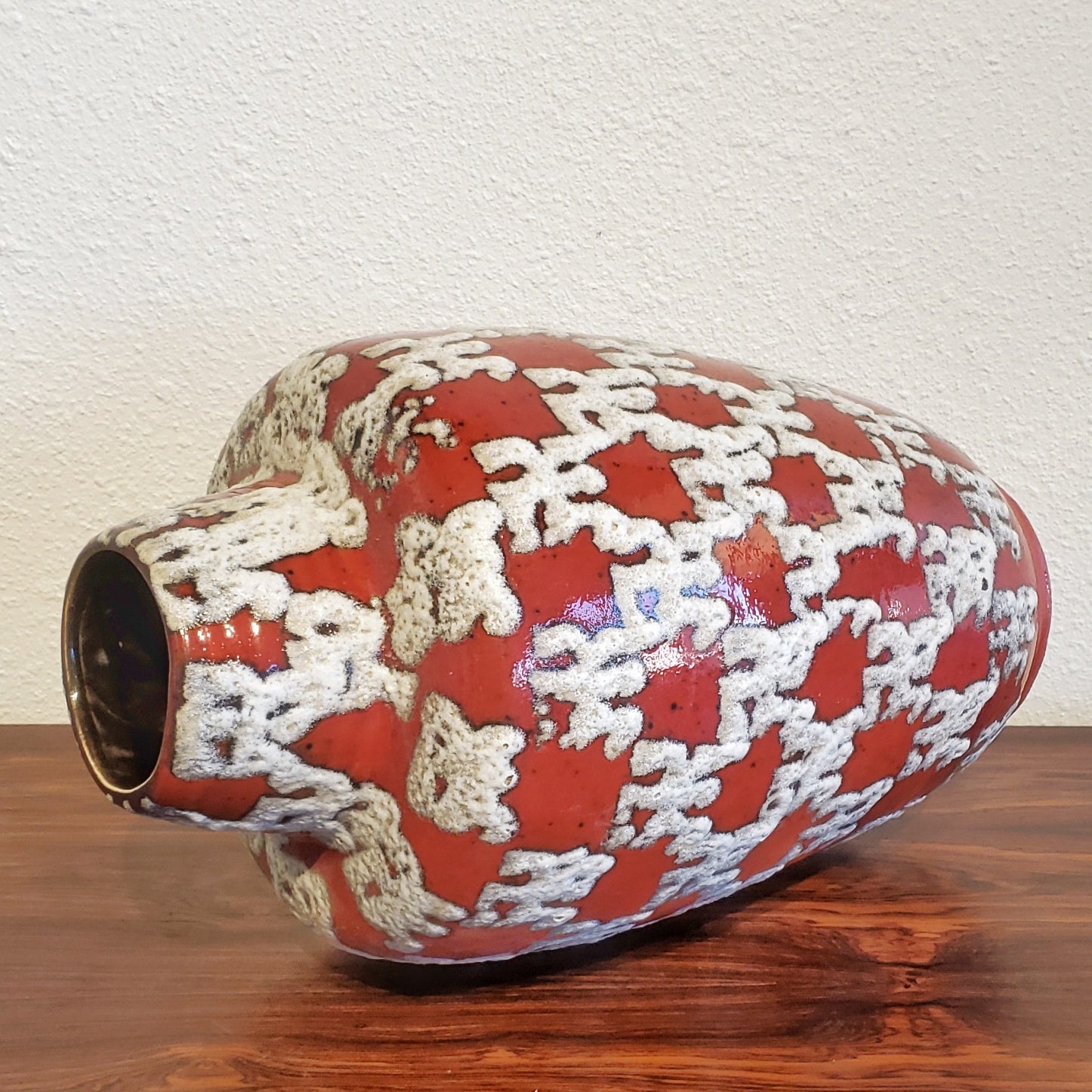
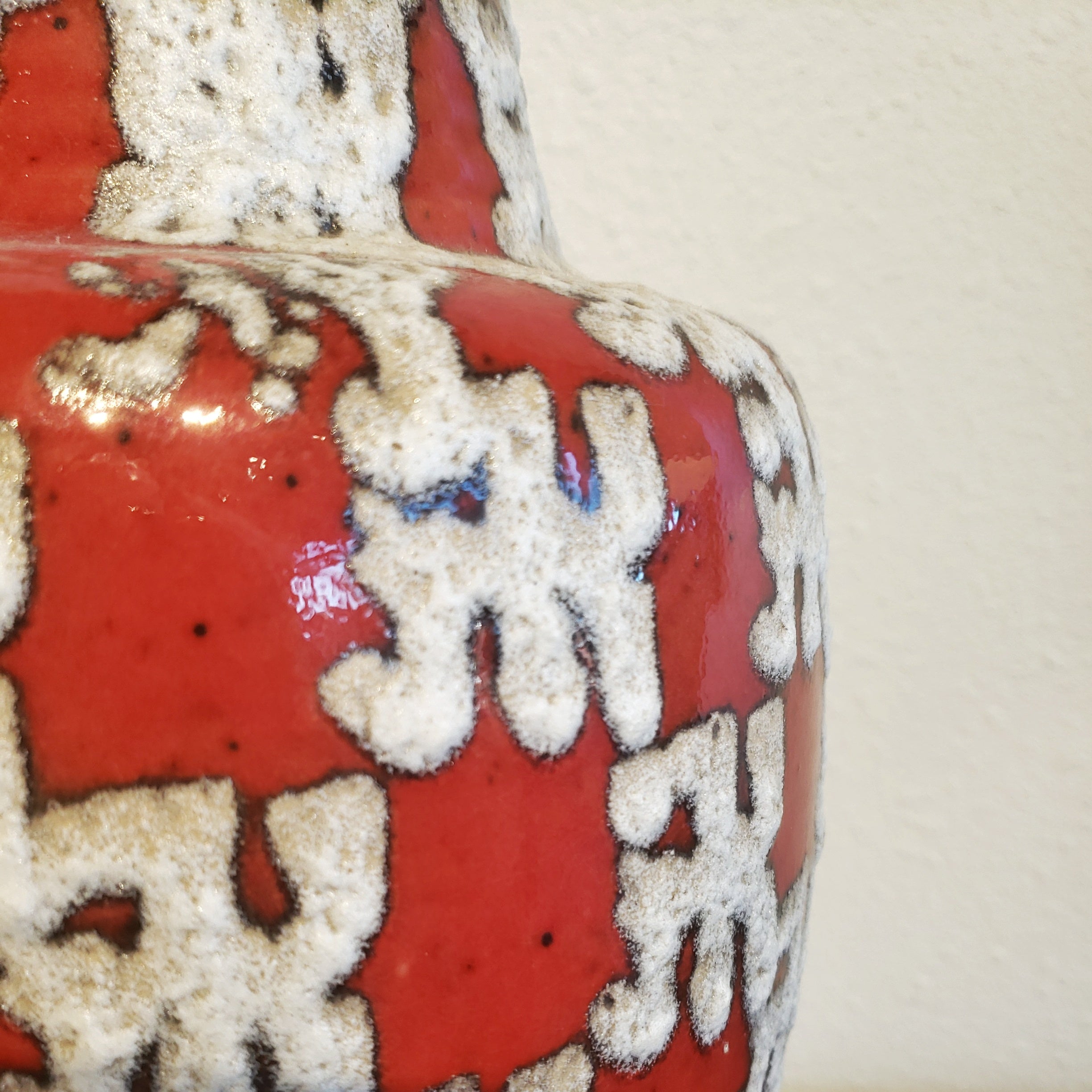
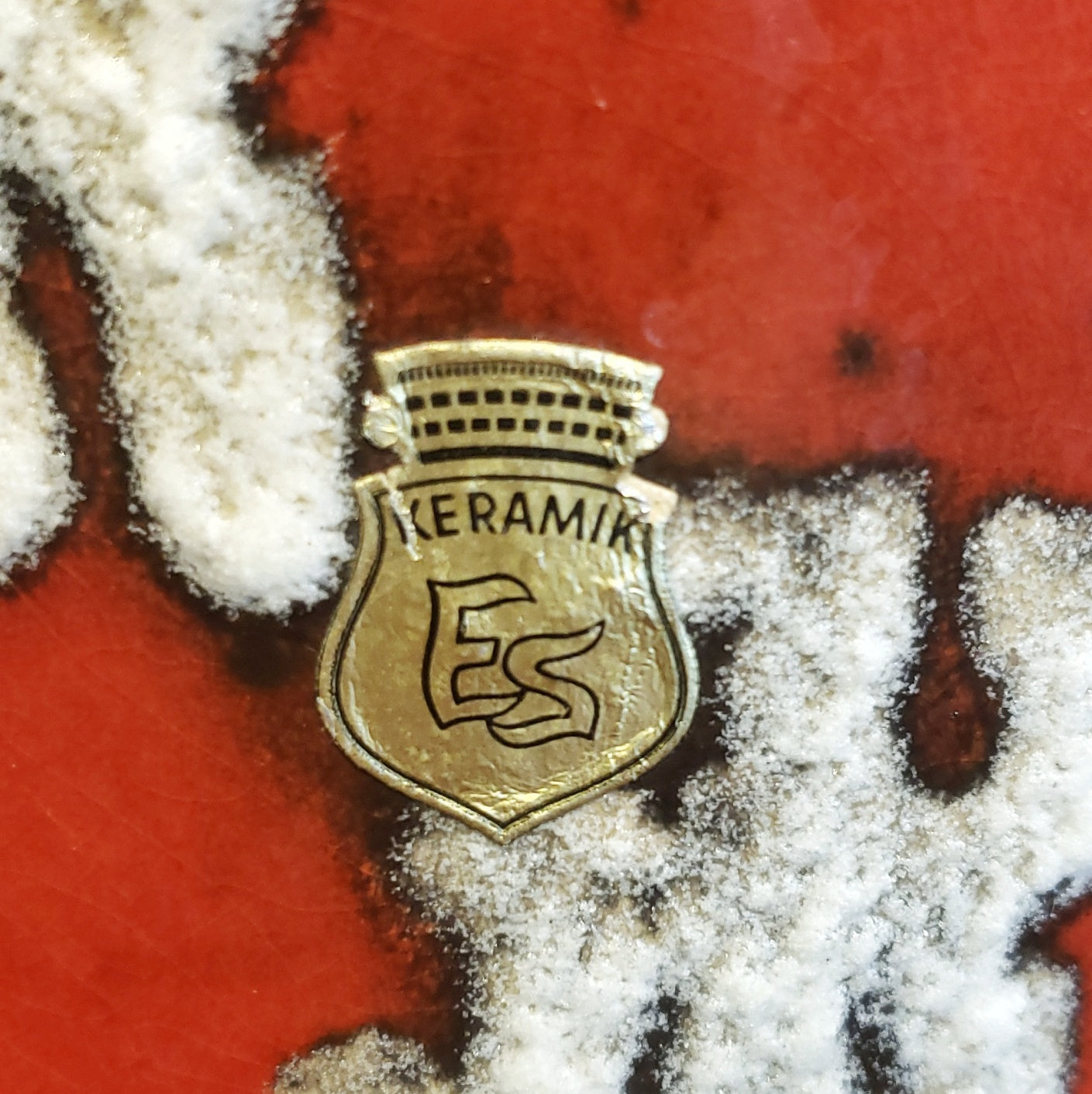
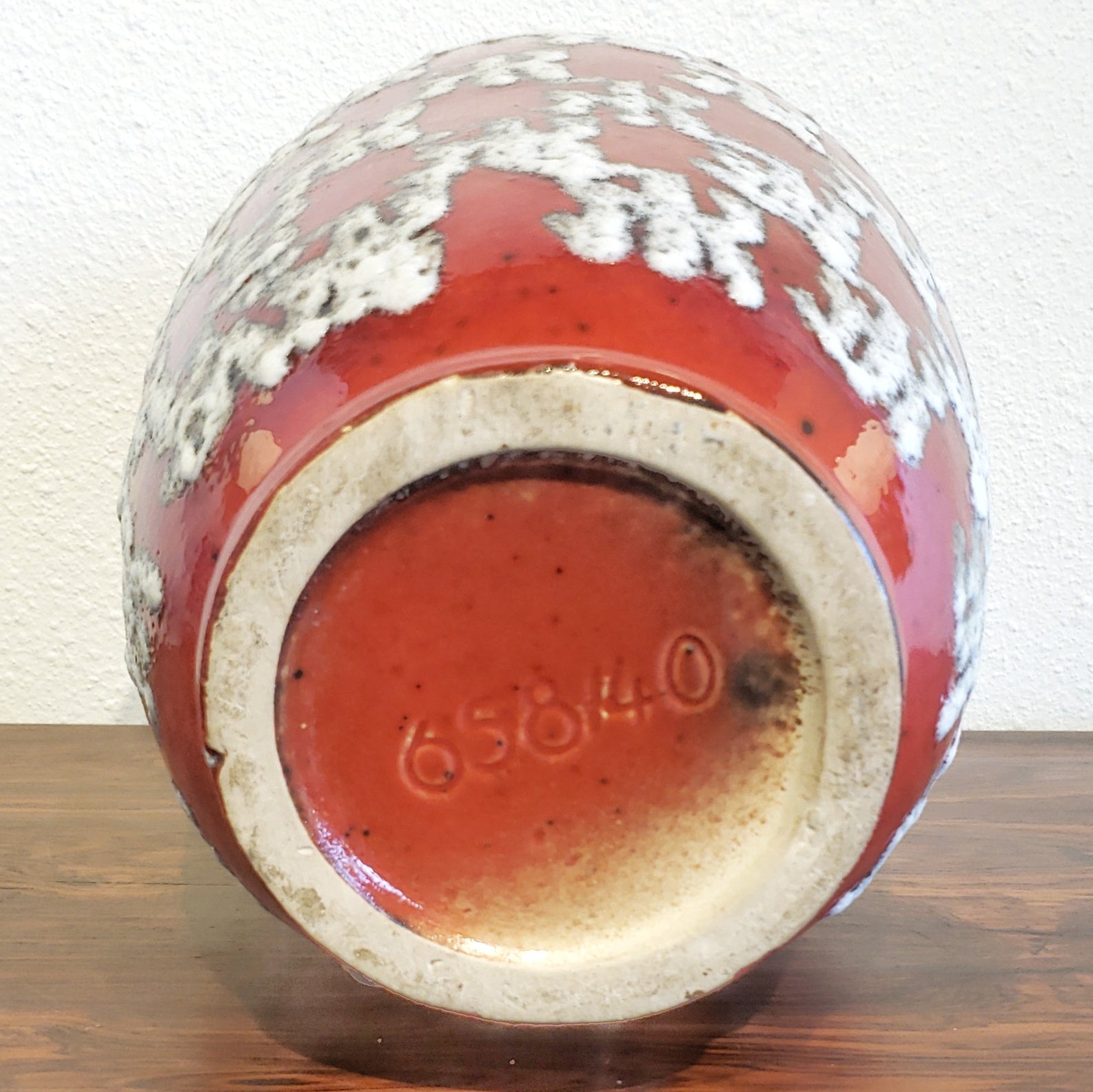
ES KERAMIK ‘BERLIN’ FLOOR VASE 658/40
CONTACT US HERE ABOUT THIS ITEM.
A Hans Kraemer designed floor vase dressed in Willi Hack's 'Berlin' décor for ES KERAMIK. A perennial favorite with West German pottery collectors, Hack's 'BERLIN' is a striking decoration of frothy, white, and volcanic runic-style symbols on a glossy, red ground. It seems especially well suited to this Hans Kraemer urn-shaped vase standing just shy of 16" (40 cm).
WILLI HACK joined ES KERAMIK (Emons & Sönhe) in Rheinbach in 1954 after training as a porcelain and glass painter at M.J. Kludt in Duisdorf. He was initially tasked with building an art department together with modeler and designer Hans Kraemer. Later he became head of the painting department; as many as eighteen people would be employed at a time to realize his designs.
It was the work of Cilli Wörsdörfer for Ruscha that inspired Hack to adopt the use of "elemental" décors. This entailed breaking down several designs into their constituent components and their recombination into brand new permutations. The method allowed for a much freer implementation of templates and naturally resulted in a large range of variations. A downside for the collector: the integration of elements from several different décors into a single piece can make the assignment of a basic décor name to the resulting "hybrid" item next to impossible. Hack used the approach in his personal production as well. Items he created at ES KERAMIK are typically marked with his painted monogram on the base; occasionally a sticker appears. With the 1974 closure of ES KERAMIK Hack, moved to Marei Keramik (also based in Rheinbach) and remained there until retirement.
HANS KRAEMER was born in 1930. He was accredited as a ceramics modeler in 1950 following a three-year apprenticeship at a factory in Jünkerath—a small municipality in the Rhineland near the Belgian border—during that town's short-lived post-war foray into the clay industry. He spent another two years as an employee of his instructor before signing on with ES KERAMIK in Rheinbach, southwest of Bonn. Throughout his tenure with the firm, Kraemer was responsible for its entire mold-stock of ceramic products, utilitarian as well as decorative. He created over 350 forms for ES KERAMIK—many of which were in production up until the company's closure in 1974. He may not have received the same level of publicity as some of his contemporaries, but the best of his work still stands on the merits of its idiosyncratic design. During the mid 1960s, ES KERAMIK partially shifted focus away from decorative ceramics; this prompted Kraemers' decision to explore a whole new field of activity: automotive design. He joined the studios of Ford-Werke AG in Cologne-Merkenich in 1968 as the leader of a team of eight modelers. He retired in 1990.
ES KERAMIK was founded in 1948 by Josef Emons and his two sons—ES being an initialism for Emons & Söhne—in the town of Rheinbach near Bonn in the German state of North Rhine-Westphalia when Emons and then partner Jean Fuss dissolved their terracotta business. (Fuss established Marei Keramik with his son that same year.) Fuss & Emons had been formed in 1921 when the two men left employment with Klein & Schardt, the predecessor of Ruscha Keramik. Its output consisted of flower pots, ornamental ceramics, and eventually drainage pipes. With the start of WWII, production came to a near standstill—with the exception of the inserts for so-called "Hindenburg lichter," an important source of wartime emergency lighting. The full program was resumed as conditions normalized after the war, but the two men chose to go in different directions.
The factory housing ES KERAMIK was largely converted to mechanical production with the company's launch, and its coal stoves were replaced with modern electric kilns. The initial product offering of planters, tubs, pots, and simple vases was soon expanded to include more decorative items. Hans Kraemer joined the firm in 1952 as a senior modeler. He produced all of the shapes for ES KERAMIK until 1968, at the remarkable rate of 15-20 designs per year. The art department was led by Willi Hack from 1954 until the firm's 1974 close. By the second half of the '50s, as many as 18 female painters were employed, among them numerous alumnae of the local glassmaking school. The total workforce topped out at 70 employees.
Sales of ES KERAMIK’s decorative wares were carried out through trade fairs and by territorial representatives. Brochures were never printed, and the company never advertised. The composition of its repertoire was determined solely by feedback from the reps and the current order situation. Successful ES KERAMIK molds and décors would remain in production as long as demand held. The quality of shapes and decorations varied broadly, but the good items were quite good; one of the best is Kraemer's pitcher-form 683, later released as shape number 883.
After the death of Josef Emons senior in 1964, management of ES KERAMIK passed to his sons. The firm's 50th anniversary was celebrated in 1971, and the factory closed its doors three years later. Some technical equipment had previously been sold off to Ruscha Keramik; but the company itself, its premises and the balance of the equipment—as well as the majority of the workforce—were taken over by the senior Emons' former partner, Jean Fuss, and absorbed by neighboring Marei Keramik.
Design Period – 1960-1969
Country of Origin – WEST GERMANY
Designer – WILLI HACK (b. 1930); HANS KRAEMER (b. 1930)
Maker – ES KERAMIK
Attribution – MARKED
Materials – CERAMIC
Colors – RED, WHITE, BLACK
Condition – VERY GOOD (no defects; may show slight traces of use)
Height (cm) – 40.0
Diameter (cm) – 21.5

